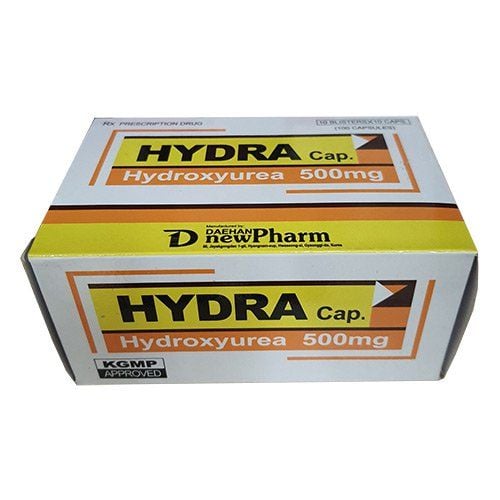This is an automatically translated article.
The article was consulted with Specialist Doctor I Le Thi Thu Hang - Dermatologist - Department of Medical Examination & Internal Medicine - Vinmec Hai Phong International General Hospital.Skin care is very important for everyone, especially kidney transplant patients. Because the drug regimen can cause immunosuppression, kidney transplant patients are more susceptible to skin disease. This article will provide some information about skin care in kidney transplant patients.
1. Learn about skin care in kidney transplant patients
Due to the drug regimen, which is important for the success of a kidney transplant and its long-term survival, the specialized immune cells in the patient's skin are gradually being depleted. This means that certain infections can develop on the skin that the immune system generally suppresses and the cells that are undergoing a change into cancer cells in response to the sun's rays. may go unrecognized and destroyed.It cannot be stressed that the sun is dangerous for all of us. Due to the loss of the ozone layer and the "greenhouse effect", we are all being hit by more and more ultraviolet light. All general warnings about skin cancer must be taken seriously by everyone, especially kidney transplant patients.
2. Dangerous effects from the sun
The damaging force in sunlight is ultraviolet (UV) light. This is divided into 3 spectrums: UVC, UVB and UVA. Around the earth there are two layers, the stratosphere and the ozone layer. Different intensities of UV rays can penetrate.Although the UVC spectrum has the greatest risk of causing cancer, the ozone layer prevents UVC from passing through the atmosphere.

3. Factors that can affect the skin in kidney transplant patients
3.1. Using drugs can affect the skin
Medicines that you are taking to keep your kidneys working and prevent them from being eliminated are immunosuppressants. In the long term, these substances are absorbed into the skin, reducing the immune response.Meanwhile, sunlight penetrates the epidermis (outermost layer) of the skin and continuously bombards the growing cells, causing changes in them. Over the course of your life, this damage is repaired to a certain extent by white blood cells that circulate in the blood stream and destroy abnormal cells. However, when something goes wrong in that system, skin cancer can arise. Due to immunosuppression, your white blood cells are restricted and fewer abnormal cells are destroyed. This means that lower-than-normal sun exposure has the potential to cause skin cancer.
This is why all patients who are taking immunosuppressants should avoid sun exposure. Therefore, taking care of kidney transplant patients to avoid the sun is very important.
3.2. Skin infections
Despite the above warnings, not all skin problems have the potential to cause cancer. Due to the drug regimen, kidney transplant patients are very susceptible to skin infections. One common disease is a fungal infection that causes pale or dark patches, spots. This is easy to treat, but is a bad sign of reduced immunity.3.3. Warts
Another common skin disease seen in kidney transplant patients is common warts. Warts are caused by many viruses and in transplant patients take a long time to disappear due to a weakened immune system. Some warts are very contagious and can be spread anywhere on the body just by scratching. However, they can be easily treated but need to be noticed early so as not to cause danger.In some cases, warts caused by the papilloma virus, if left for a long time and exposed to the sun, will develop into skin cancer. Therefore, early treatment is worthwhile and much less traumatic than later stages.

4. Skin changes in transplant recipients
Any changes in the skin should be carefully monitored. Sunburn or sunspots is a premalignant condition that needs to be treated. They are often found on exposed sites such as the back of the hands, face, or scalp.Sunspots may be dormant for 10 to 20 years, but eventually they are activated by the sun. In winter, they may get better, but as soon as you get out in the summer, they swell and become more active. Once they are larger than 1cm in width, they become dangerous because there is a high risk of developing into actual cancer.
These changes are much more common in transplant patients, manifesting themselves at an earlier age than in the general population, because reduced immunity accelerates the effect.
If left untreated for a long time, keratosis will eventually develop into invasive squamous cell carcinoma, which can then spread throughout the body and eventually kill you. However, like most skin conditions, they can be treated at an early stage with little discomfort.
4.1. Skin tumor in kidney transplant patient
The most common form of skin tumor in the UK is basal cell carcinoma, which is common in older people, but increasingly younger people. They are not dangerous in themselves because they do not spread throughout the body like skin cancer.4.2. Mole
Moles are a recognizable and potentially dangerous skin symptom. Because of immunosuppressive agents, kidney transplant patients are at increased risk of moles developing into a malignant state.As the mole matures, the cells grow, fall deeper into the skin and accumulate, causing the skin to swell slightly, becoming rough. As a mole grows further, the cells fall completely into the deeper part of the skin, creating a large mass of cells completely away from the upper epidermis (outer layer). Therefore, take care of the skin in kidney transplant patients so that moles do not develop into malignancy.
Besides, you have to be careful if there are flat or slightly raised moles. When a mole changes and the cells become malignant, it grows along the surface of the skin, often in an irregular manner. From an ordinary mole that is round or oval in shape, a small arm or several arms, grows and its shape becomes irregular. These cancer cells also change their ability to produce pigment. In moles you can have variations in color, one brown, one pale. These are the most important changes to look for.

4.3. Other skin manifestations
Of course, not every brown spot is a mole. A widespread dark patch on the skin that appears much after birth, often in the teen years and can eventually spread down the arm, is completely benign and nothing to worry about.Age-related warts are very common everywhere on the body, especially on the back and chest. They look like small pieces of cloth that have been pressed against the skin. They cause a lot of problems, but are completely benign and nothing to worry about.
5. Skin care in kidney transplant patients
As with all diseases, prevention is better than cure. Therefore, skin care in kidney transplant patients should be as follows:Check your skin regularly and if you see anything suspicious, see a dermatologist. When you go out, especially from March to October, you should always wear a sunscreen with an SPF of 50. Even in the shade, you're still vulnerable to sun damage, so Pay attention to how you dress. Wear a hat or some other head covering, especially on men with little hair on their heads. If you drive, wear gloves in the summer to reduce the sun's influence on the backs of your hands. Never sunbathe, no matter how tempting this may be. A “healthy” tan is not healthy at all. Consult your GP if you are in doubt about anything on your skin, he or she will refer you to a dermatologist. In conclusion, skin care is very important for everyone, especially kidney transplant patients. Because the drug regimen can cause immunosuppression, making kidney transplant patients more susceptible to skin diseases.
Please dial HOTLINE for more information or register for an appointment HERE. Download MyVinmec app to make appointments faster and to manage your bookings easily.
References: kidney.org.uk, kidney.org














